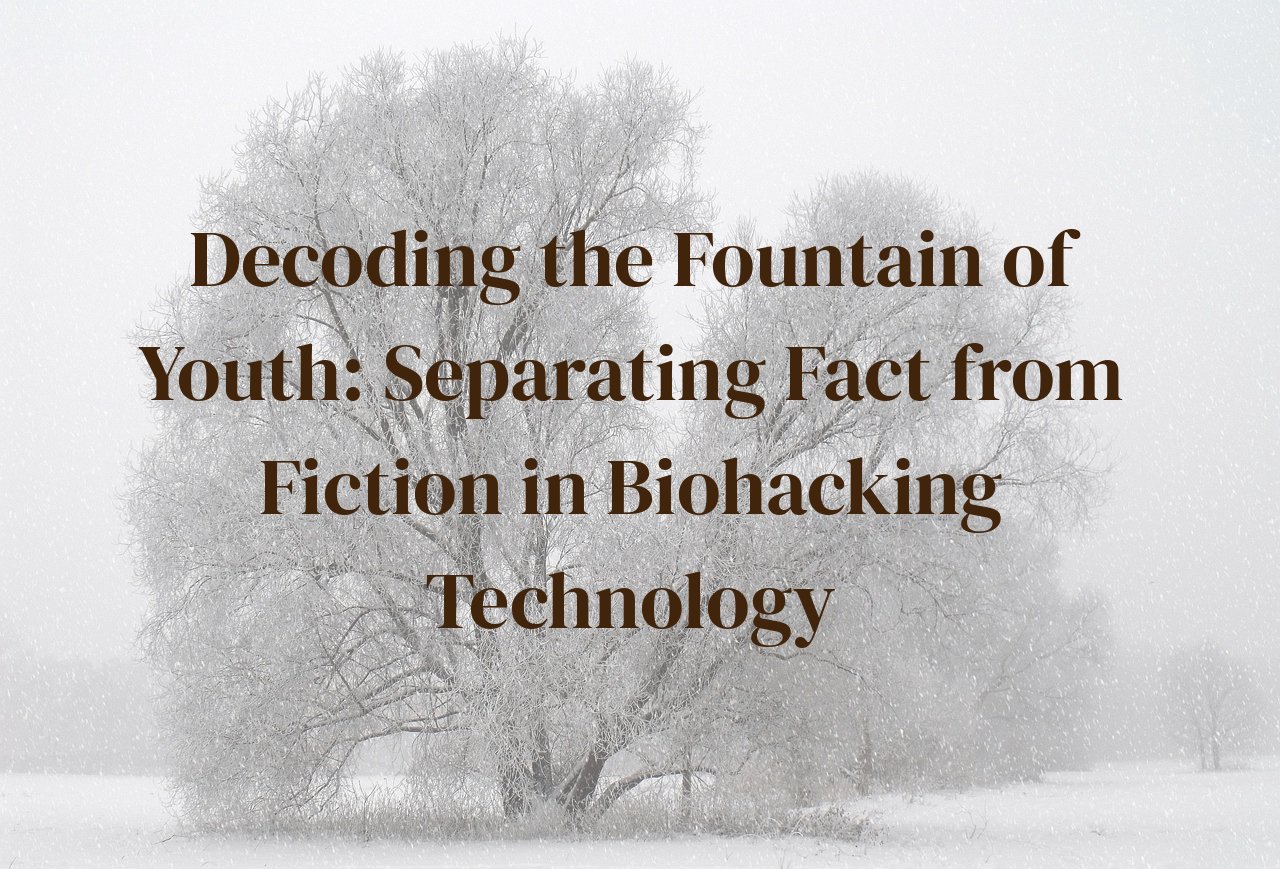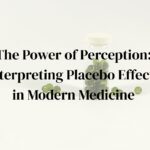
In the quest to unravel the mysteries of aging, ‘Biohacking for Longevity’ has emerged as a buzzword among those seeking not just to add years to life, but life to years. This blog post peels back the layers of this modern-day alchemy to separate the myths from the realities and highlight the latest advances in the field. Readers will gain insights into what measures are mere fantasies versus those backed by credible science. We will delve into how adopting certain biohacking strategies could potentially enhance your life span and well-being, while exploring the frontiers of emerging technologies that promise to redefine human aging.
Table of Contents
The Allure and Promises of Biohacking: Setting the Stage
The concept of biohacking encompasses a broad spectrum of practices aimed at optimizing human performance, extending lifespan, and potentially unlocking the mysteries of the human genome for better health outcomes. What drives countless individuals towards this avant-garde approach is a deep-seated desire — the yearning to elude the clutches of time and preserve the vitality of youth. From Silicon Valley tech enthusiasts to fitness gurus, the allure of biohacking resides in its promise of personal empowerment over one’s biology.
Skeptics may dismiss biohacking as a mere fad, yet many adherents see it as a gateway to transcend conventional limits. Practices under the biohacking umbrella range from grounded, routine adjustments to radical experimental procedures. It includes intermittent fasting, thought to enhance cellular autophagy and longevity; nootropic supplements for cognitive enhancement; and cold-temperature exposure, believed to boost metabolic function. Rapid technological advancements intertwine with biohacking, lending credence to its transformative potential. Genetic editing tools like CRISPR offer prospects of correcting heritable conditions, and AI-driven health analytics can provide personal insights previously unattainable.
Though shrouded with an aura of modernity, biohacking isn’t an entirely new endeavor. It descends from a long history of human attempts at self-improvement and health optimization, from Ayurveda and traditional Chinese medicine to the practices of ascetics seeking physical transcendence. The story of biohacking is a testament to the human spirit’s perennial quest for the fountain of youth, a narrative enriched by the latest chapters in contemporary science and technology. At its heart, the fascination with biohacking signals an innate drive for self-determination and an enduring belief in the improbability of human potential.
Demystifying Longevity Myths: What Doesn’t Work
The quest for the fountain of youth often leads to the enchanting promises of various fads and alleged quick fixes. Unfortunately, many of these supposed short-cuts are more mythology than reality, offering false hope to those seeking to turn back the biological clock. One such myth is the idea that extreme calorie restriction diets can significantly extend human lifespan. While research on animals like nematodes and mice indicates some positive results, rigorous evidence for the same effect in humans is still insufficient. Extreme dieting can also lead to nutritional deficiencies and harm overall wellbeing.
Another widely held belief is that there is a miracle supplement or a combination of supplements that can halt aging. The market is inundated with anti-aging pills and potions claiming to reverse time at the cellular level. However, the truth is that, while some supplements may support health to a certain extent, none can single-handedly stave off the aging process. The synergistic impact of lifestyle, genetics, and environment plays a far more significant role in aging than any individual supplement could.
A third myth is the reliance on hormetic stressors, such as extreme cold or heat exposure, to induce anti-aging effects. Proponents argue that pushing the body to adapt to harsh conditions can strengthen it against the ravages of time. Nonetheless, evidence of any long-term benefits is lacking, and these practices could pose risks to health, especially for people with pre-existing health conditions. Hence, while mild stressors might contribute to resilience, extremes are more likely to do harm than good.
Detoxification rituals are also popular in the biohacking community – from juice cleanses to colonic irrigation, these treatments claim to purge the body of toxins and thereby restore youthful vigour. However, the body’s own liver and kidneys are remarkably efficient at detoxifying; these aggressive treatments are unnecessary at best and potentially harmful or disruptive to the body’s natural processes at worst.
Last but not least, some believe that simply applying the latest tech gadgets or software that tracks sleep, steps, or heart rate could significantly extend one’s lifespan. While these tools are excellent for promoting awareness and encouraging a healthy lifestyle, they are merely informational aids. It’s the actionable changes in behavior – increased physical activity, better sleep hygiene, and stress management – that are the true workhorses in the push towards a longer, healthier life.
Evidence-Based Biohacking: Strategies That Hold Promise
The quest for longevity has perennially fascinated humanity, propelling a slew of biohacking endeavors grounded in science. Among these, caloric restriction (CR) stands tall – not as a draconian diet but a thoughtful reduction in calorie intake without malnutrition. Evidence implicating CR in lifespan extension has been demonstrated in various species, emphasizing its relevance in human health optimization. Complementing CR, intermittent fasting (IF) has gained a reputable status. The cycling through periods of feast and famine taps into our evolutionary past, potentially engaging cellular repair processes that might confer anti-aging benefits.
Next on our list, sleep, that restorative bastion, emerges as a key player. While the world sleeps, our bodies are bustling – repairing DNA, clearing toxins and consolidating memories. Prioritizing sleep quality and aligning with our circadian rhythms is no mere fad; it’s a deeply rooted commitment to sustaining youthfulness. Speaking of regeneration, exercise is the paradigm of health alchemy, transmuting the mundane into vitality. Particularly, high-intensity interval training (HIIT) and resistance training have carved niches, revered for their prowess in amplifying mitochondrial function and maintaining muscle mass – both critical for an effervescence that defies the years.
Neutraceuticals, those targeted molecules, offer much more than their esoteric names suggest. Resveratrol, NMN (Nicotinamide Mononucleotide), and antioxidants like CoQ10 speak in biochemical whispers of enhanced cellular function, and while the jury deliberates their lifespan-prolonging effects, the symphony of anecdotal affirmations and emerging studies creates a compelling narrative. Coupling these internal elixirs with external advances, the role of wearable technology emerges, offering real-time insights into our biological processes. These devices allow for a personalized biohacking approach, ensuring lifestyle adjustments are not merely a stab in the dark but precision-guided by our own physiological data.
Innovative Technologies on the Horizon for Extended Life
The field of biogerontology is abuzz with innovative technologies, each holding the potential to revolutionize our understanding of aging and extend human life. One such promising area is the development of senolytic drugs. These compounds selectively target senescent cells – those that have stopped dividing and secrete harmful substances causing age-related deterioration. By purging these dysfunctional cells, senolytics could mitigate the ravages of time on our bodies, potentially forestalling age-related diseases and extending healthy lifespan.
Another frontier is the application of CRISPR gene-editing technology. Tailored genetic modifications that mimic naturally occurring variants associated with longevity could, theoretically, enhance our resistance to disease and slow the aging process. While ethical and technical challenges remain, CRISPR’s potential in extending human life is a testament to the unprecedented ways we might reprogram our biology for better health and longevity.
Stem cell therapy also holds remarkable promise for regenerative medicine. By repairing or replacing damaged tissues, stem cells could combat the degenerative aspects of aging. Advances in this area may lead to breakthrough treatments that rejuvenate bodies at the cellular level, offering a potent tool in the quest for longer, healthier lives.
Furthermore, the use of artificial intelligence (AI) in predictive health analytics is rapidly advancing. By analyzing vast amounts of health data, AI can identify early warning signs of aging and disease, enabling proactive interventions that could extend human longevity. This approach harnesses the power of machine learning to not only predict health trajectories but also to develop personalized medicine tailored to individual aging patterns.
Finally, the integration of nanotechnology in medicine, especially with the creation of targeted drug delivery systems and nanobots, is positioned to dramatically transform healthcare. These tiny devices could circulate within our bodies, repairing cellular damage, unclogging arteries, or even ‘cleaning’ plaque from the brain, common in neurodegenerative diseases like Alzheimer’s. If successful, nanomedicine could provide us with a powerful toolkit to directly combat the underlying causes of aging.
The Ethical and Practical Considerations of Aging Interventions
The exploration of biohacking and anti-aging interventions taps into a profound human desire to extend life and improve health. Yet, these ventures aren’t without their ethical and practical quandaries. At the heart of the ethical debate is the question of accessibility. Advanced anti-aging technologies, from gene editing to senolytic drugs, could widen existing socioeconomic disparities if only a privileged few can afford them. This raises concerns about the equitable distribution of these life-extending therapies and the potential for creating a society stratified by the longevity of its citizens.
Moreover, there’s the question of societal impact. As people live longer, the dynamics of population growth, employment, and retirement will be fundamentally altered. Governments and institutions might struggle to support an aging population that surpasses traditional life expectancy, leading to practical challenges concerning healthcare systems, pension plans, and intergenerational relationships.
Furthermore, aging interventions might invite a reevaluation of what it means to live a fulfilling life. If life is significantly extended, will the additional years be healthy and productive, or will they merely prolong the decline associated with old age? There’s a profound difference between extending the human lifespan and extending the healthspan, where the focus is on enriching the quality of life rather than just the quantity of years.
Considering the dynamics of evolution and ecology, some argue that artificially extending human life might interfere with the natural order, potentially causing unforeseen consequences to the delicate balance of ecosystems that have evolved over millennia. Interfering with the aging process could have ripple effects that extend far beyond individual well-being.
Lastly, the prospect of drastic life extension touches on philosophical debates concerning identity and the self. Prolonged lifespans could impact social relationships, cultural evolution, and personal identity, challenging our very notion of what it means to be human.
In conclusion, while the promise of aging interventions tantalizes many, it is imperative to address the profound ethical and practical considerations that accompany the quest for extended life. Only by engaging in thoughtful discourse and careful analysis can society hope to navigate these complex waters, ensuring that the benefits of longevity are realized in a way that honors the collective good and preserves human dignity.
Conclusion
As we’ve journeyed through the tantalizing landscape of biohacking, it’s crucial to remember that the path to longevity is often a blend of patience, skepticism, and scientific inquiry. While some may seek quick fixes or believe in exaggerated claims, true longevity is rooted in practices supported by rigorous research and ethical considerations. By staying informed and open-minded, we can discern reality from myth and responsibly embrace the technologies transforming our understanding of life’s twilight years.



